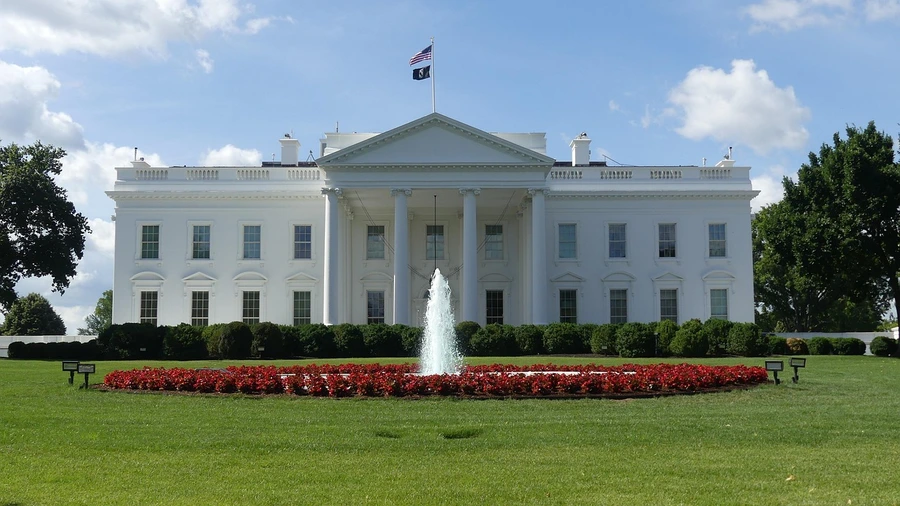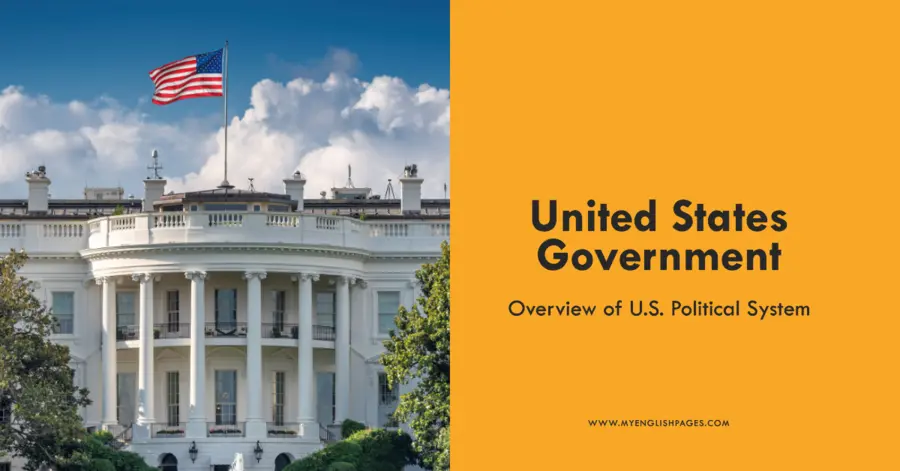English-Speaking Countries: United States Government Explained to English Learners (ESL Resources)
English-Speaking Countries: United States Government

1. Politics of the USA
The United States of America is a federal constitutional republic. Political power is divided among different branches and levels of government. The national (federal) government shares authority with 50 individual state governments.
At the federal level, power is shared among:
- The Executive (headed by the President),
- The Legislative Branch (Congress),
- and the Judiciary (the Supreme Court and other federal courts).
2. Branches of Government
A. The Executive Branch
The executive branch is headed by the President, who serves as both head of state and head of government. The President is responsible for enforcing federal laws, commanding the armed forces, and directing foreign policy.
B. The Legislative Branch
Legislative power is held by Congress, which consists of two chambers:
- The Senate (100 members – 2 from each state),
- The House of Representatives (435 members – based on state population).
Congress passes federal laws, approves the budget, and can declare war.
C. The Judicial Branch
The judicial branch interprets the law and ensures it aligns with the U.S. Constitution. It is composed of the Supreme Court and lower federal courts. The courts also resolve disputes between the legislative and executive branches.
3. Political Parties
The U.S. Constitution does not mention political parties, but over time, two major parties have come to dominate:
- The Democratic Party
- The Republican Party
These two parties have been the main political forces since the Civil War era. Other smaller or “third” parties exist but usually have limited political influence.
4. Unique Features Compared to Other Democracies
The U.S. political system differs from most other developed democracies in several ways:
- Greater power is granted to the upper house (the Senate).
- The Supreme Court has a broad scope of judicial power.
- A strong separation of powers exists between the executive and legislative branches.
- There is a strong two-party system, with limited influence from third parties.
5. State and Local Governments
In addition to the federal government, each U.S. state has its own constitution, governor, and legislature.
There are also local governments, including:
- Counties
- Cities (municipalities)
- Special districts (like school boards or transportation authorities)
This complex system ensures that decisions are made at multiple levels, from the national to the community level.
Key Vocabulary
- Federal: A system where power is divided between a central government and smaller political units (states).
- Constitution: The fundamental legal document that outlines the structure and powers of a government.
- Congress: The legislative branch of the U.S. government.
- Supreme Court: The highest federal court in the U.S.
- Separation of powers: The division of government responsibilities into different branches to prevent abuse of power.
- Democracy: A system of government where power is held by the people, often through elected representatives.
Quiz: Understanding the U.S. Government
Select the Correct Answer:
- Who leads the Executive Branch?
- a) The Speaker of the House
- b) The Chief Justice
- c) The President
- What is the function of the Judicial Branch?
- a) To make laws
- b) To enforce laws
- c) To interpret laws
- How many chambers does Congress have?
- a) One
- b) Two
- c) Three
- What are the two main political parties in the USA?
- a) Conservative and Liberal
- b) Republican and Democratic
- c) Green and Libertarian
2. c) The President
3. c) To interpret laws
4. b) Two
5. b) Republican and Democratic
Learn More
To explore more about U.S. politics, visit the Wikipedia page on the Politics of the United States


